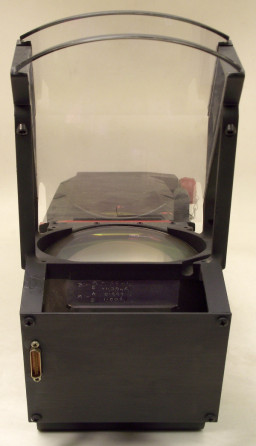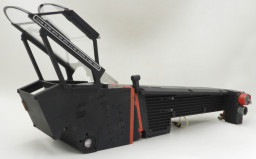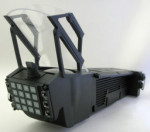The F-5 was sold to many countries and provided a simple but effective fighter aircraft with potential for avionic upgrade. The Company worked on various upgrade programmes and in each case a replacement for the existing Lead Computing Optical Sight (LCOS) was offered.
The earliest such replacement is seen in Catalogue No. C0022. The HUDWAC consists of three line replaceable units; the Pilot’s Display Unit (PDU), an Electronics Unit (EU) and a Weapon Data Input Panel (WDIP).
The physical configuration of the HUDWAC was designed to be drop-in compatible with all known versions of the F-5E/F. Other than removal of the Lead Computing Optical Sight (LCOS) no rearrangement of existing systems nor structural modification was necessary; the new PDU mounts onto the same LCOS tray. The HUDWAC was made to be interchangeable between F-5E’s fitted with the APQ-153 radar and AHRS and those fitted with an APQ-159 radar and an INS without any modifications. The HUDWAC monitors the armament panel switch settings and the in-built software determines the required operating mode which overall makes the system easier to use than the original LCOS.
The PDU gives a field of view nearly twice that of the ASG-29 Lead Computing Optical Sight it replaces. The unit hosts a control panel with switches and a keypad through which mission data such as target elevation and barometric pressure can be loaded. A 16mm film camera or a colour video camera can be attached to the aft end of the PDU. In this aircraft the PDU is hard mounted to a pre-aligned mounting frame, rather than an adjustable Mounting Tray i.e. it is already boresighted to the airframe. The drawback to the installation is that the PDU has to be long and narrow which is reflected in the design of the circuit boards within the unit. The High Voltage Power Supply locates on the underside of the PDU and there would be a Gun Camera and an Up-Front Control Panel fitted to customer requirements.















